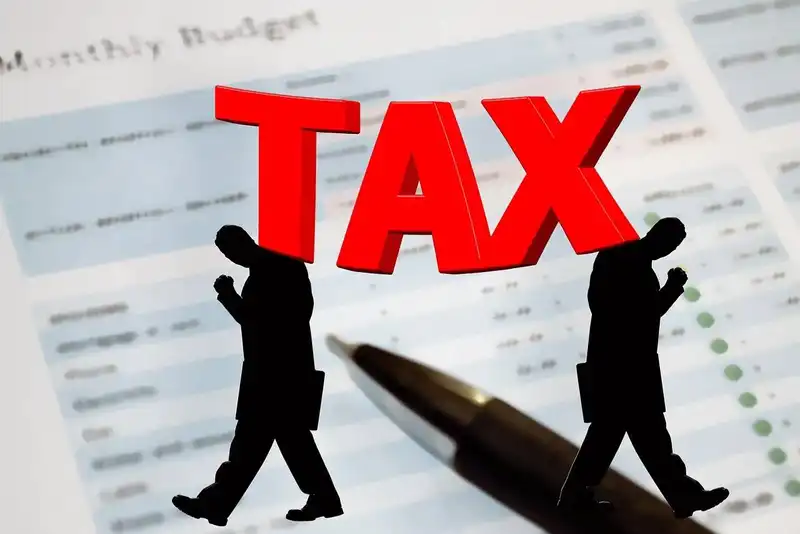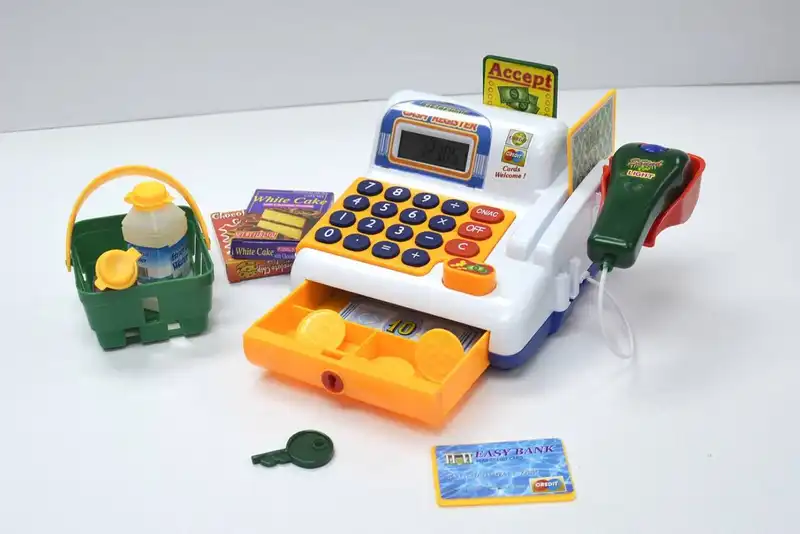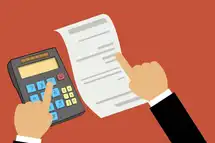What is restaurant accounting?
Restaurant accounting is the process of tracking and managing the financial activities of a restaurant. This includes recording and reporting on the financial transactions of the restaurant, such as sales, purchases, expenses, and income.
How to Improve Your Restaurant Accounting With a POS System
What is Restaurant Accounting?

Accounting is a vital activity that monitors the financial well-being of organizations. For restaurants, it looks at financial transactions, including the management of revenue, expenses, accounts receivable (amount due to the company), accounts payable (amount due from the company), and fixed assets such as air-conditioners, coolers, refrigerators, kitchen equipment, POS architecture, restaurant real estate, and so on. Accounting software offers automated data reporting and data analysis.
A general ledger consists of a thorough account of the organization's assets, costs, liabilities (loans, unpaid vendor bills, leases on equipment and property), and revenue. It provides restaurant owners with substantial data, which helps in creating financial statements such as balance sheets, income statements, cash flow statements, and equity statements.
When accounting for restaurants, certain metrics need to be taken into account. These include food cost; food sales; inventory costs; labor expenses; cost of goods sold (COGS); costs associated with loyalty programs, discounts, rewards, and promotional campaigns; prime cost (a sum of labor costs and COGS); expenses on taxes, utility bills, repairs, maintenance, and new software and hardware.
Restaurant accounting is a back-office activity that borrows from and influences all other facets of restaurant management, including supply chain management, inventory management, workforce management, customer relationship management, task and time management, food safety management, point of sale or POS system, and business intelligence.
Accounting Terms to Know
Understanding specialized accounting terms is crucial to make sense of restaurant accounting. Some of these accounting terms are as follows-
1. Cost of Goods Sold (COGS)- This refers to the direct expense of producing the products sold by an organization. It is computed by adding the value of the starting inventory with that of the purchased inventory, followed by a deduction of the value of the ending inventory. For a restaurant, it would include the cost of the ingredients used to make a dish and the cost of the labor that had gone into preparing the dish. It, however, excludes costs incurred to distribute the product outside the restaurant.
2. Restaurant labor cost- This includes the wages paid to restaurant employees like servers, bussers, chefs, hosts, and others, and also payments made to temporary staff. Employee benefits, payroll taxes, and overtime pay (for work done for more than 40 hours per workweek) are also part of the expenses incurred by a restaurant on human resources.
3. Prime cost- This refers to the sum of the COGS and labor costs. It essentially includes the expenses on payroll, food and beverages, taxes, and employee benefits.
4. Food cost- The cost of the food purchased by a restaurant per dollar value of sales gives you the food cost. Along with labor cost, this is one of the most important expenses incurred by restaurants and usually varies between 28-35% of revenue.
5. Food cost percentage- This measures the proportion of your money that goes into purchasing food and beverage stocks for your restaurant. This value is arrived at by dividing the total COGS by the total revenue for a specified period and then multiplying by 100.
6. Chart of accounts- This is an exhaustive list that companies make use of for their internal accounting. It describes every account, identifies the kinds of accounts involved, and provides a summary of account balances. A chart of accounts lets business owners collect information on the status of every account.
7. Occupancy expenses- This includes fixed costs such as property taxes and insurance, rent, and utilities.
8. Operating expenses- This refers to the cost of operating a restaurant other than occupancy expenses, COGS, and labor costs. They include the expenses you incur on a daily basis, for instance, on buying silverware, napkins, cutlery, marketing, and so on.
9. Fixed and variable expenses- Fixed costs are those that don't undergo change with the number of sales. They include labor costs, occupancy costs, and operating expenses. Variable expenses, on the other hand, change with the number of sales and kind of work required. Examples of variable costs are asset maintenance costs, taxes, and commissions.
You may be struggling to keep track of your finances and improve your accounting process.
A POS system can help you keep track of your finances and make your accounting process more efficient.
Restaurant Accounting Methods- Cash
A cash-based accounting method monitors earnings as they move into the account. Costs, on the other hand, are considered when payments are done.
A restaurant accounting software solution that aligns with the cash-based accounting method allows customer invoices to be produced and exported in the form of PDF or other file types.
The cash-based accounting approach helps organizations control payments while defining pricing, line items, and rates of tax.
This approach makes it easy to monitor vendor payments, generate and print tax forms, facilitate payments made to attorneys as well as independent contractors, and also facilitate payments on account of royalty and rent. Some basic reporting, including histories of payments, and summaries of tax are supported too.
Restaurant Accounting Methods- Accrual
Accrual accounting is the more comprehensive method to monitor a company's finances. It records expenses and earnings at the moment of the transaction, regardless of whether payments are actually made or if money is coming into or going out of the account. In fact, accruals get registered in balance sheets even before you receive or pay money. Transactions essentially take place when products change hands, for instance, food from a restaurant to the customer, or supplies from a vendor to the restaurant.
Accounts payable, in this regard, refers to the anticipated expenditure, while accounts receivable points to the expected earnings.
Accrual accounting scores over the cash-based approach due to its ability to provide a fuller idea of the sources of earnings and the nature of expenditure. Therefore, organizations, which see a substantial amount of revenue coming in would do well to adopt the accrual method of accounting. In fact, organizations that rake in more than $1 million in terms of revenue should ideally use the accrual method.
However, in spite of the advantages offered by accrual accounting, some organizations find it complicated and instead seek refuge in the cash-based method that simply monitors cash out and cash in.
The use of accounting software helps in resolving the issue of complexity by automating and streamlining the process.
How to Stay on Top of Your Accounts

A business can stay on top of its accounts by implementing intelligent accounting systems that allow efficient handling of billing processes; monitoring of accounts payable and receivable; and processing, printing, and mailing of invoices.
With accounting systems, you can also maintain a list of basic data on your customers and suppliers, like account numbers, names, and addresses. Some accounting solutions are able to remember pricing details of products too.
Automated invoicing and late reminders make sure that you receive timely payments even when you have forgotten to manually send out invoices. Some accounting platforms support electronic invoices and let customers pay simply with a click of a button, thereby speeding up and simplifying transactions. This spares vendors the trouble of getting their cheques processed and depositing money in banks. Such payments are fast and secure. Accounting systems can effectively handle credit and debit card payments as well.
Purchase orders can be generated and payments automated by accounting systems. Cash projections can be automated, as a result of which organizations can make timely decisions pertaining to cash, such as decisions on investment and borrowing.
You may fall back on your accounting system for advice on ways to lower taxes and improve tax compliance. An accounting system can automate tax calculation and tax filing.
Moreover, you can effectively manage multiple schedules of payment, and various types of compensation and benefits with the help of accounting systems. Also, recorded transactions can be easily reconciled with bank statements.
Robust data reporting in the form of attractive visuals and data analysis provides a clear picture of the financial condition of the organization and helps in making solid sales forecasts. Planning done this way helps businesses minimize costs and maximize sales.
Accounting systems let you produce routine reports like balance sheets (assets and liabilities), income statements (profit and loss), accounts payable and receivable, statements on cash flow, and a summary of the payroll. Reports can be customized as well.
Regular and minute reading of a quality food news website like Restaurantslife can also help restaurant accounting. Restaurantslife Features news and articles on everything related to the restaurant industry. Restaurantslife Features information that can be used as valuable inputs to inform your accounting practice.
In order to make the accounting really effective and highly accurate, one can also outsource the exercise to professionals or firms that provide restaurant accounting services . These accounting service providers come with specialized technical knowledge that restaurateurs may lack.
Managing a restaurant's finances can be difficult and time-consuming.
A POS system can help make your accounting process more efficient by automatically tracking sales and inventory.
What is Restaurant Accounting Software and How Does it Work?

Restaurant accounting software is a computer program that helps with restaurant bookkeeping, reporting, and recording the restaurant's financial transactions. With the accounting software by its side a restaurant can make data reporting and data analysis fast, simple, and accurate. It represents big progress over manual and rudimentary methods of accounting that take up a lot of time, are extremely tedious, and prone to error.
Accounting software works by automating various steps of financial oversight. The biggest advantage of automation, apart from the convenience it offers, is that a business operation no longer has to depend on human initiatives. So for instance, even if your employees fail to prepare a weekly sales report, you need not be overly concerned as you can be certain that smart technology will have done the job for you.
Accounting software allows invoices, purchase orders, sales reports, payroll data, and sales and demand forecasts to be generated quicker and with a greater amount of accuracy than manual methods.
With the help of accounting solutions, revenues and expenditures of restaurants can be calculated and recorded in an efficient and convenient manner. Cost-tracking is automated by virtue of which businesses get a quick and comprehensive view of various expenses like food cost, restaurant labor cost , taxes, and expenses on repair and maintenance. This allows restaurants to ensure that cash keeps flowing.
A restaurant accounting solution interacts and integrates with various parts of restaurant management such as employee management, inventory management, customer relationship management, task and time management, supply chain management, business intelligence, and of course, the POS system. This interoperability leads to an exchange of information, creating the bedrock for crisp data reporting and analysis. Data visualization features of accounting software ensure that the information is presented in perfectly comprehensible form, which facilitates the generation of actionable insights.
Reporting and interpretation of data supported by accounting software facilitate sales forecasting and budgeting. Accounting solutions also help with asset management. Moreover, auditing features of accounting systems allow restaurants to remove barriers to sales growth and deal with cost increases.
With the help of software, tax computation and filing can be automated too. Accounting solutions also act as a database for common tax forms. They facilitate robust cash management by reconciling the company's cash transactions with its bank statements.
A quality accounting solution also supports a simple restaurant chart of accounts that allows food service businesses to get a broad picture of their assets, liabilities, revenues, and COGS, and hence, make better decisions. It is also cloud-based, which means the data can be accessed on the go, from wherever, anytime, using any mobile gadget.
How Can a POS System Help With Accounting?
A restaurant POS serves crucial information on the basis of which the financial position of the company can be monitored. A powerful POS system lets you gather, organize, and monitor data in a frictionless manner. In this regard, it's more than a simple restaurant cash register.
The best POS systems are cloud-based, which lets users access data in real time, and this allows information on crucial metrics like restaurant revenue, sales-to-labor ratio, operating expenses, food cost percentages, and so on, to be derived anytime, from anywhere, and with a few clicks on a mobile device. This supports timely decision-making.
Sales trends discovered through the interpretation of POS reports help in identifying bestselling menu items and also those that only receive lukewarm response from customers. They show how much of the inventory has been used or sold, what needs to be ordered, and in what quantity.
POS data also help restaurants identify variance in food usage. They reveal if the restaurant has been purchasing more than necessary, resulting in food wastage and cost escalation, or if it has not been placing timely orders, leading to stock depletion.
POS reports, therefore, have a bearing on supply chain and inventory management. It also allows restaurants to adjust the recorded and actual stock levels to factor in changes in stock counts as a result of wastage, spoilage, loss of value, theft, providing free samples, and counting errors.
Moreover, historical data provided by POS systems allow accounting solutions to determine the present state of health of the business and ways to increase profits.
POS sales data also allows restaurants to optimize their staff numbers and schedule an adequate number of employees to cover high-traffic periods, and a reduced staff strength during lean periods.
Top 3 POS Systems for Restaurant Businesses

1. Plum POS-
This all-in-one cloud-based POS system lets you handle various aspects of restaurant management, including inventory management, employee management, customer tracking, sales performance monitoring, and data reporting from a single location. The POS system can link with several other business applications. Reports on inventory levels, sales figures, and restaurant revenue statistics, for instance, help in accounting. The POS hardware can withstand stresses and strains in busy kitchens. It's easy to use and a very handy tool for both, a small business and a large restaurant chain.
2. TouchBistro-
This cloud-based POS platform, designed particularly for restaurants, requires only an iPad to operate. It is rich in features, allowing restaurants to streamline table management, menu management, inventory management, integrated processing of payments, and unlimited logins for restaurant employees and management. Data reporting and analysis supported by TouchBistro can be used for financial accounting. TouchBistro also offers add-ons like kitchen display systems, self-service kiosks, digital menu boards, and customer-facing displays that strengthen business operations, increasing the chance of making profits.
Lightspeed-
This is a cloud-based platform with the Lightspeed restaurant POS supporting robust reporting, tools for customer management, tableside ordering, and integrations. Moreover, it doesn't limit the number of users. Its strong reporting feature makes this POS system ideal for financial accounting. There are add-ons like accounting integration, delivery integration, loyalty program, self-ordering kiosk, and a loyalty app. The Lightspeed retail POS works effectively on iPads, but can also function well on a browser on any computer terminal. Lightspeed iPads can be used as fixed POS terminals or mobile registers.
You want a POS system that can help with your restaurant accounts.
There are so many POS systems out there, you're confused about which one to pick.





